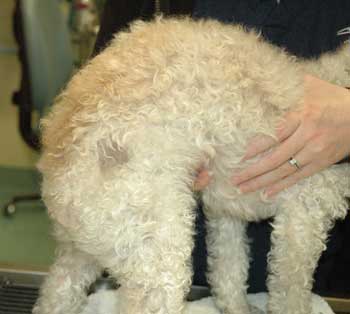Article Highlights Role of Veterinary Specialists
Animal Dermatology Clinic was highlighted in the recent article “The Specialist’s Role in Veterinary Healthcare”, Debra Channick, PhD. The article was published in The Courier, the official magazine of the Portuguese Water Dog Club of America.Dr. Channick interviews a number of veterinary specialists as well as general medicine veterinarians and discusses the growing role of the specialist as an extension of pet care through the primary veterinarian.
Veterinary specialists may invest in equipment that cost tens of thousands of dollars but it is impractical for the general veterinarian to purchase such equipment when possibly it will be used intermittently. When the general veterinarian encounters a difficult or unusual case, it may be a routine patient due to the volume that similar cases are frequently seen with a specialist.
The primary veterinarian is the first step in the routine and general health of a pet. Regular check-ups with the primary veterinarian are advised to monitor and identify changes in your pet’s health and to address those issues early when they are potentially easier to treat. But should an illness or condition become chronic or beyond the scope of the primary veterinarian, the resources of a veterinary specialist are readily available.
(To read the full article The Specialist’s Role in Veterinary Healthcare, please go to www.animaldermatology.com and look under Tips & Information.)
FDA Cautions Dowg Owners About Chicken Jerky Products
The Food and Drug Administration (FDA) released a cautionary warning to dog owners regarding the rise of reported pet illnesses possibly linked to chicken jerky treats imported from China. The chicken jerky is also sold as chicken tenders, strips or treats.In the past 12 months the FDA has seen an increased number of these complaints from veterinarians and dog owners.
The FDA previously issued a cautionary warning regarding chicken jerky products in September 2007 and a Preliminary Animal Health Notification in December 2008. Complaints dropped in the latter part of 2009 and most of 2010, but the FDA is now seeing the number complaints rise again.
For pet owners who choose to feed their dogs chicken jerky products the FDA advises that dogs are watched closely for any or all of the following signs that may occur within hours or days of feeding the products: decreased appetite; decreased activity; vomiting; diarrhea, sometimes with blood; increased water consumption and/or increased urination. If the dog shows any of these signs, stop feeding the chicken jerky product. Consult your veterinarian if signs are severe or persist for more than 24 hours.
The FDA is continuing their investigation to isolate the problem and its origin. Many of the illnesses reported may be the result of causes other than eating chicken jerky. If you suspect a food illness associated with pet foods, a report may be submitted to the FDA Consumer Complaint Coordinator in your state or go to http://www.fda.gov/petfoodcomplaints.
This article has been posted on the Animal Dermatology Clinic website in ‘Recent News’ and in ‘Tips & Information’.

 Injection Site Alopecia
Injection Site Alopecia